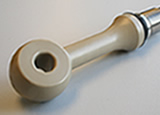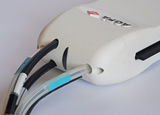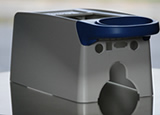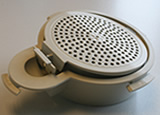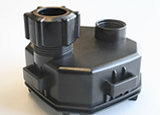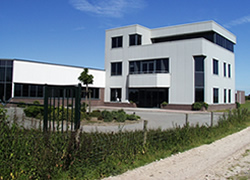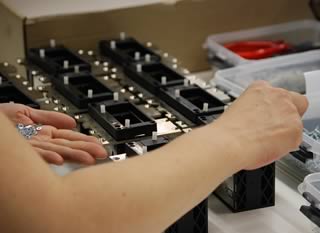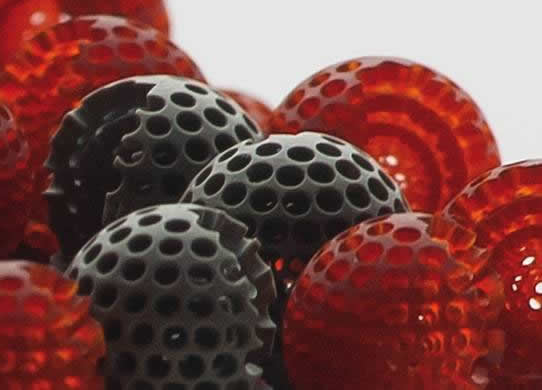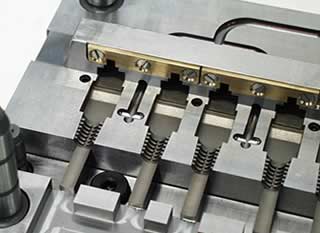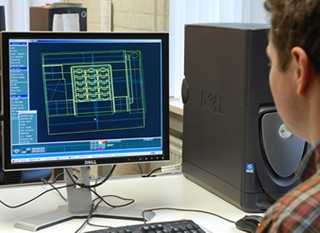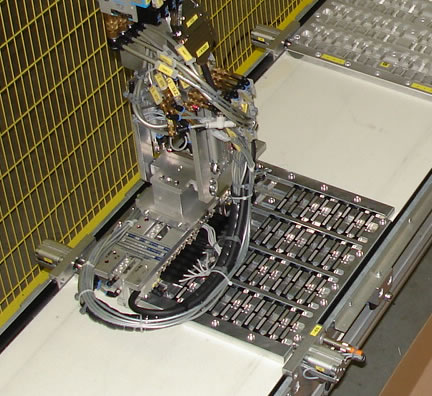
Moldflow cooling simulations
Cooling simulations are heat transfer analysis designed to analyze temperatures and heatflows in the entire inection-mold. The main results of a cooling analysis are temperature distributions in the plastic part and throughout the injection-mold, cooling time, and cooling circuit flow parameters (such as pressure or flow rate requirements).
Assuming that the filling and packing phases (see section 2) have been optimized, improving the cooling system performance can substantially reduce the cooling time (in most cases the cooling time comprimises for about 80% of the total cycle time so any reduction reduces the cycle time and ultimately the part-costs).
In general, the mold cooling system performance is affected by four items:
1) Differential Cooling
===================
Non-uniform cooling causes shrinkage variations through the thickness of a part. Aspects which influence the shrinkage variations due to differential cooling are:
- thermal properties of the mold
- variations in wall thickness' of the part
- uneven temperature across the mold
2) Differential shrinkage
=====================
This results in shrinkage variation across the part surface (i.e. parallel and perpendicular to the flow). Differential shrinkage can be caused by:
- wall thickness variations
- gate location
- cooling line design and –parameters
- processing conditions (for example packing profile)
3) Material orientation effects
==========================
This results in different amounts of shrinkage parallel and perpendicular to the flow. Shrinkage due to orientation effects can be caused by:
- polymer orientation (molecular or fiber)
- gate position(s)
- cooling line design and –parameters
- processing conditions




